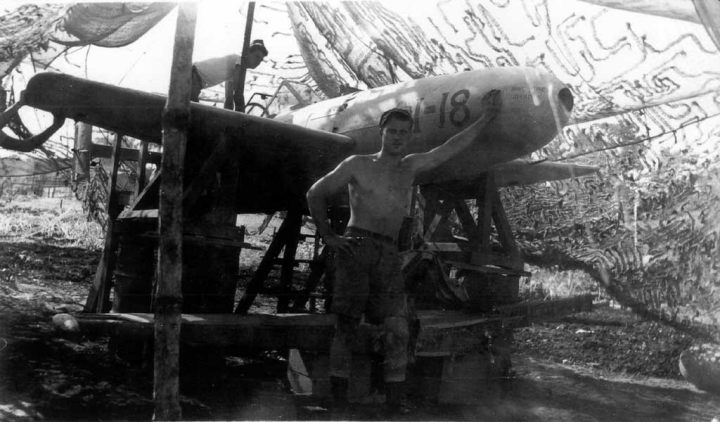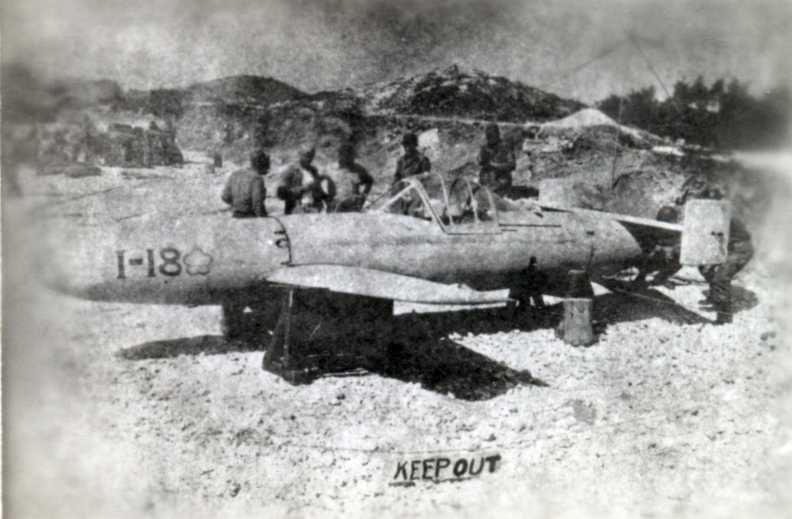
"The Heinkel He 176 " Topic
12 Posts
All members in good standing are free to post here. Opinions expressed here are solely those of the posters, and have not been cleared with nor are they endorsed by The Miniatures Page.
Please don't make fun of others' membernames.
For more information, see the TMP FAQ.
Back to the WWII Aviation Discussion Message Board
Areas of InterestWorld War Two in the Air
Featured Link
Featured Ruleset
Featured Showcase Article
Featured Workbench Article miscmini  completes his work by applying decals, doing a bit of weathering, and coating the minis with a matte-finish. completes his work by applying decals, doing a bit of weathering, and coating the minis with a matte-finish.
Featured Profile Article The Editor is invited to tour the factory of Simtac, a U.S. manufacturer of figures in nearly all periods, scales, and genres.
|
Tango01  | 18 Feb 2012 10:07 p.m. PST |
"The Heinkel He 176 was an experimental single-engine rocket aircraft made by the German Ernst Heinkel Flugzeugwerke to the late thirties.
He holds the distinction of being the first aircraft in the world to be powered only by a liquid-fueled rocket.
The first official flight of the Heinkel He 176 was in June 20th 1939, piloted by Erich Warsitz. The next day, June 21st the He 176 was presented to the leaders of the RLM (Ernst Udet and Erhard Milch). Udet was not impressed, and forbade further testing because of the dangers inherent to flying rockets. This ban was issued twice and twice was removed, until July 3rd 1939, when he organized other aerial display to Roggentin for Adolf Hitler and other leaders of the Third Reich. On 12 September 1939, it was issued an official order to stop any further development on the project of the He 176. The prototype aircraft remained hidden for years in the Heinkel factory at Rostock-Marienehe, but then it was packed and shipped to the Air Museum in Berlin where it was destroyed by Allied bombing in 1944." From
vittomodelling.com/?p=976 Do you consider that it was a great mistake to archive these airplane?
What about if the germans develop Air wings of this rocket plane in 1940? Hope you enjoy!. Amicalement
Armand |
| GarrisonMiniatures | 19 Feb 2012 2:21 a.m. PST |
The idea would probably have delighted the British. Erratic, short range, taking up resources better spent on other machines. Now, if you had said put more effort into developing and producing decent numbers of jets, 1942 or 1943 could have been interesting. |
Thresher  | 19 Feb 2012 5:08 a.m. PST |
Does anyone know about the paint mixing program/App that is being used in the article? Sorry, only looked at the pictures and don't understand the language.
Ken |
Thresher  | 19 Feb 2012 5:42 a.m. PST |
Ooops Never mind. I see I can translate the article and found the information I need. Thank you.
Ken |
| Klebert L Hall | 19 Feb 2012 9:23 a.m. PST |
Probably wouldn't have had any noticable effect upon the course of the war. Rocket planes were pretty much a dead end tech in WW2.
-Kle. |
Tango01  | 19 Feb 2012 10:04 a.m. PST |
The japanese would used them as Kamikazes!. Amicalement
Armand |
| Kaoschallenged | 19 Feb 2012 5:37 p.m. PST |
The Japanese already had the Baka for that. They were also going to produce their own version of the Me-163. The Mitsubishi J8M. But it was never made operational. Rocket flights were too short term and dangerous to really be useful. The Me-163 was an example and besides the He-176 was not designed to be used in combat but as a experimental test vehicle. Robert


"The Ohka was the Yokosuka MXY7, Navy Suicide Attacker Ohka (Cherry Blossom). The first version was the Model 11 carrying a 1,200 kg (2,646 pound) warhead in the nose and designed to fit in the bomb bay of a specially modified Mitsubish G4M2e, Navy Type 1 Attack Bomber Model 24J, Allied Code Name "Betty." The Ohka had three Type 4 Mk. I Model 20 rocket motors with a combined thrust of 800 kg (1,764 pounds) that would fire for eight to ten seconds. While flying level at 3,500 meters (11,485 feet), the Ohka could reach a top speed of 250 knots (288 mph or 463 km/h) without power and 350 knots (403 mph or 649 km/h) with full thrust. The terminal dive velocity of the Model 11 was 500 knots (576 mph or 927 km/h). A total of 755 Ohka Model 11s were built between September 1944 and March 1945. Their first operational mission was on 21 March 1945 when 16 G4M2e bombers were intercepted and dropped their loads short of the target. The first successful mission was on 1 April 1945 when Ohkas damaged the battleship USS West Virginia (BB-48], attack transports USS Hinsdale (APA-120) and USS Alpine (APA-92), and tank landing ship USS LST-884. The first ship sunk by an Ohka was the destroyer USS Mannert L. Abele (DD-733) on 12 April 1945. The second version, the Ohka Model 22, was planned to be an improved version of the weapon to be carried by the faster Yokosuka P1Y1, Navy Bomber Ginga, Allied Code Name "Frances." In order to accommodate the Ohka in the bomber, the wing span was reduced and a smaller warhead was carried. The Ohka 22 was also fitted with a small turbojet engine instead of rocket motors so that it could be launched further away. Unlike the Model 11 which had a 20-mile (32 km) range, the Model 22 had a 70-mile (113 km) range. Fifty Model 22s were built; one test flight was made in July 1945 but auxiliary rocket motors installed under the wings fired accidentally just after release and the Ohka crashed. I do not believe that any operational missions were flown with this aircraft. The third version, the Ohka Model 33, also had a turbojet but carried a larger payload. This aircraft was intended to be carried by a four-engine Nakajima G8N1 Navy Experimental 18-Shi Attack Bomber Renzan (Mountain Range), Allied Code Name "Rita." The program was cancelled before any were completed. There were several other Ohka models that did not go into production." link |
Tango01  | 19 Feb 2012 9:58 p.m. PST |
The Ohka was ready on march 1945 and the german aircraft rocket was from 1939.
So, if they continue with the project and the japanese copie them, maybe in 1943? they had that weapon ready?
It would change many things in the Pacific. Amicalement
Armand |
| Kaoschallenged | 19 Feb 2012 10:55 p.m. PST |
IMO Not really. The He-176 was not meant for anything other then experimental. Proving that a rocket can propel an aircraft. It wasn't a wonder advancement in aviation like the Jet engine turned out to be. The Me-163 first flew in 1941 before Japan entered the war. BTW the Baka had to be released from a Mother craft. The same would have to be for any other type of rocket craft the Japanese would use. They and the Mother craft would be vulnerable. The Japanese version of the Me-163,the J8M, would, like its German brother, be just as much ineffective and more dangerous to its pilots though it probably be saved for the possible US invasion. It really wouldn't have made much of a difference. Like was mentioned before it was dead end tech. There just wasn't enough loiter and combat time with rocket propelled aircraft. This shows the result of one Japanese mission, "On 21 March 1945, 16 Ohka-carrying "Betty" bombers were to be escorted by 55 Zeros to attack Task Group 58.1 (Hornet, Bennington, Wasp, and Belleau Wood). Another two "Bettys" were to escort and provide navigation and observation. Due to technical problems, 25 Zeros had to turn back or could not take off. The Ohka attack force was intercepted by 16 US Navy Grumman F6F Hellcat fighters and the Ohkas were immediately jettisoned by the "Bettys," some 113 km (70 mi) from the target. None of the "Bettys" returned, no ships were attacked and 16 of the Jinrai Butai were killed, with only 15 damaged Zeros making it back to their base." If detected early enough it looks like the Navy's defenses could defeat the use of the Baka. Robert |
| Klebert L Hall | 20 Feb 2012 7:53 a.m. PST |
So, if they continue with the project and the japanese copie them, maybe in 1943? they had that weapon ready?
It would change many things in the Pacific. Probably not.
Japan had already lost by 1943, and we could build ships faster than they could sink them with Okhas. Might have made it slightly more bloody, but the outcome would have been the same.
-Kle. |
Tango01  | 20 Feb 2012 10:20 a.m. PST |
o.k. I understand.
Thanks for the explanations. Amicalement
Armand |
| GarrisonMiniatures | 20 Feb 2012 2:30 p.m. PST |
Also worth pointing out that the British also had jets in 1941 – the Gloster Whittle link So another 'what if'. |
|

